Healthcare providers can enhance their clinical performance through the How to Give and Receive Feedback in Healthcare Training course, which highlights the importance of effective feedback in healthcare settings. This course equips providers with key principles for delivering constructive feedback, fostering a culture where feedback is embraced as a tool for growth rather than criticism. By mastering these skills, healthcare professionals can improve team communication, patient outcomes, and overall workplace collaboration, making this training essential for ensuring high-quality care and professional development.
What You Will Learn:
Key principles of delivering constructive feedback
Promoting a culture where feedback is seen as a tool for growth rather than criticism
Details:
Course length: 30 minutes; CME: 0.5
Languages: American English
Key features: Audio narration, learning activity, and post-assessment.
American Medical Compliance is accredited by the Accreditation Council for Continuing Medical Education (ACCME) to provide continuing medical education to physicians. Our Continuing Medical Education (CME) program is committed to enhancing the knowledge, skills, and professional performance of healthcare providers to improve patient care outcomes. Through high-quality educational activities, we aim to address the identified educational gaps and to support the continuous professional development of our medical community. American Medical Compliance designates this activity for a maximum of 0.5 AMA PRA Category 1 Credits. Physicians should only claim this credit for their complete participation in this activity.
Get Certified
American Medical Compliance (AMC) is a leader in the industry for compliance, Billing, and HR solutions. To become certified, please visit us at: American Medical Compliance (AMC).
Reach out for other courses by visiting the AMC Course Library.
Importance of Feedback
As a general rule, it seems that learners value feedback more when it is given by someone they respect as a role model.
Appropriate feedback contributes significantly in developing learners’ competence and confidence at all stages of their professional careers;
It helps them think about the gap between actual and desired performance, and identify ways to narrow the gap and improve.
For health professionals in particular, it promotes reflective and experiential learning ,which involves “training on the job”, and reflecting on experiences, incidents and feelings.
More importantly, feedback aims to develop performance to a higher level by dealing with underperformance in a constructive way.
The training enhances healthcare providers’ skills by demonstrating the impact of effective feedback. Respected role models deliver feedback that learners value, strengthening competence and confidence. This training enables providers to recognize performance gaps and develop strategies for improvement. In healthcare, feedback drives learning through real-world experiences and reflection. Most importantly, it fosters growth by addressing underperformance constructively, leading to better patient care.
Feedback Mechanisms
The “feedback sandwich”: starts and concludes with positive feedback, and what can be considered as the more critical feedback is “sandwiched” between the positive aspects. This can be applicable in everyday clinical practice. However, if you use this method continuously, it might lose its effectiveness. The person receiving our feedback will only wait for the “but” in the middle of your sentence. In this case, make sure to give positive feedback on its own when the opportunity arises. If your coworkers feel acknowledged daily, they will be more open to all kinds of feedback when applicable.
“Chronological Fashion Feedback”: focuses on reflecting observations chronologically, reiterating the events that occurred during the session back to the learner. For instance, an observer can go through a learning session and give feedback from beginning to the end.
The course helps healthcare providers improve their feedback skills by exploring effective methods like the feedback sandwich and chronological feedback. This training equips providers to deliver feedback that strengthens learning, confidence, and teamwork.
Types of Feedback
Formal feedback is planned, structured, and scheduled feedback. It is usually conducted at midrotation or midcourse to assist learners in optimizing their learning in the remaining part of the rotation. It can also occur at other times, such as at the end of the educational activity, after a significant educational event, or after observing a substantial learning deficiency. Most of the recommendations, elements, and requirements of feedback focus on this type.
Informal feedback is short, immediate, and focused. It usually takes place during or immediately after educational activities. This type of feedback facilitates and enhances the learning experience while it is taking place and mixes easily with traditional teaching or training. The difference between feedback and instruction in these situations is that feedback should focus more on principles, concepts, and patterns than particular facts or events. Also, feedback should guide and facilitate the progress of the learning process.
Constructive feedback is task-focused feedback that aims to enhance the learning experience. Ideally, all feedback should be constructive.
The course helps healthcare providers strengthen their ability to give and receive feedback by covering formal, informal, inspiring, corrective, and constructive feedback methods. This training equips providers to deliver effective feedback that drives learning, fosters growth, and improves patient care.
Preparing to Give Feedback
When preparing to give feedback, think about what you would like to achieve. What do you want to highlight, what went well and where could there be some improvements?
Planning in advance is crucial to the process. There is no “one-size fits all” approach; feedback should be tailored to each individual and the corresponding situation.
In sum, this training helps healthcare providers improve their feedback skills by emphasizing preparation and personalization. Before giving feedback, providers define their goals, highlight strengths, and identify areas for improvement. Effective planning ensures feedback fits the individual and situation rather than following a one-size-fits-all approach. Providers carefully craft their message, focusing on key points without overwhelming the learner. By anticipating the recipient’s readiness and reaction, they ensure feedback is well-received and drives meaningful improvement in clinical practice.



